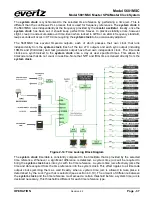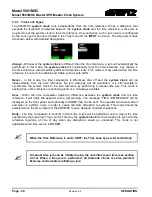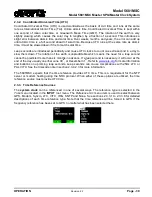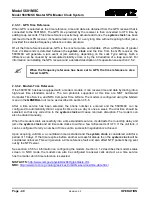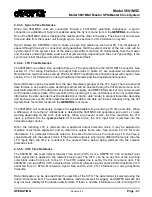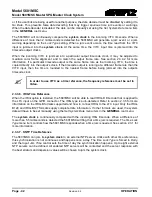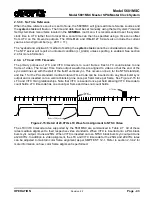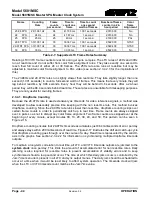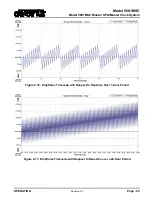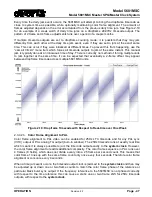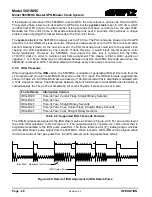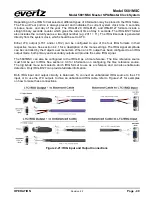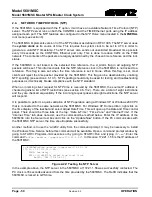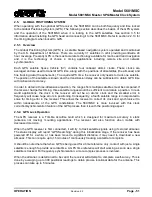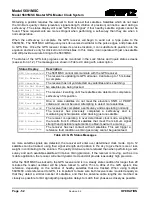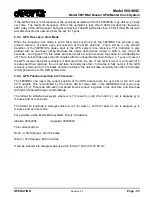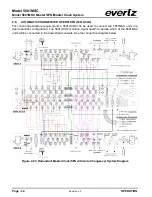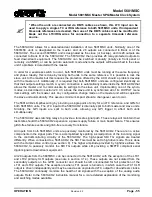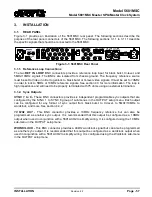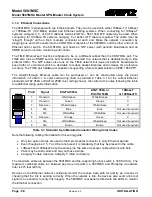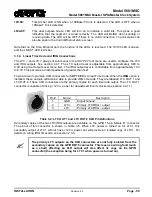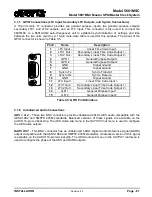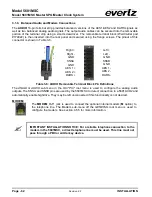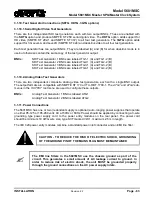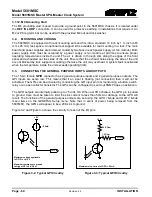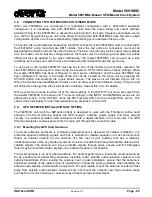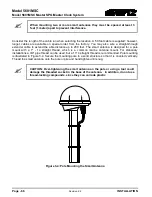
Model 5601MSC
Model 5601MSC Master SPG/Master Clock System
OPERATION
Revision 2.2
Page - 51
2.5.
GLOBAL POSITIONING SYSTEM
When operating with the optional GPS receiver, the 5601MSC can be both frequency and time locked
to the Global Positioning System (GPS). The following section describes the basics of the GPS system
and the operation of the 5601MSC when it is locking to the GPS satellites. See section 3.5 for
information about installing the GPS head and connecting it to the 5601MSC. Refer to section 2.2.13 for
the timing diagram when locked to GPS.
2.5.1. Overview
The Global Positioning System (GPS) is a satellite based navigation system operated and maintained
by the U.S. Department of Defence. There are currently 31 satellites in orbit providing worldwide 24
hour coverage. Presently GPS is the most accurate technology available for marine and land navigation
and it is the technology of choice in timing applications including remote site and network
synchronization.
Each GPS satellite Space Vehicle (SV) contains four onboard atomic clocks. These clocks are
averaged and are used to transmit GPS time, along with the positions of all satellites (the almanac) and
fine tracking data (the ephemeris). To acquire GPS time, the receiver only needs to track one satellite.
The position of the satellite is known and the transmission delay can be subtracted to obtain GPS time
with millisecond accuracy.
In order to obtain a three-dimensional position, the ranges from multiple satellites must be compared. If
the receiver had perfect timing, three satellite ranges would be sufficient to calculate a position. In real-
world applications, the clock in the receiver will not be an atomic clock and the smallest error in
frequency will cause huge errors in positioning. Consequently, a fourth satellite range is incorporated to
solve for timing error in the receiver. This allows the receiver to correct its clock and synchronize it to
within nanoseconds of the GPS constellation. The 5601MSC is more involved with this clock
correction/synchronization feature of the GPS process than it is with the positioning aspect.
2.5.2. GPS Lock Operation
The GPS receiver is a Trimble Accutime Gold which is designed for maximum accuracy in static
(antenna not moving) mounting applications. The receiver will also function when mobile with
decreased precision.
When the GPS receiver is first connected, it will try to track satellite signals using its stored almanac.
The status display will report “GPS Searching” during this initialization stage. If the receiver has been
powered off for a while, or has been moved a significant distance, it may need to download a new
almanac. This can require up to 15 minutes of continuously tracking a satellite to complete.
It should be noted here that when GPS is being used for a time reference only, contact with just a single
satellite is enough to provide accurate time. A GPS time reference will start working as soon as a single
satellite is tracked. For frequency synchronization, a more complex process is involved.
When the almanac is determined to be valid, the receiver will attempt to complete a self-survey. This is
done by averaging up to 300 positional readings to obtain precise locational data for the antenna. This
process can take up to 5 minutes.

